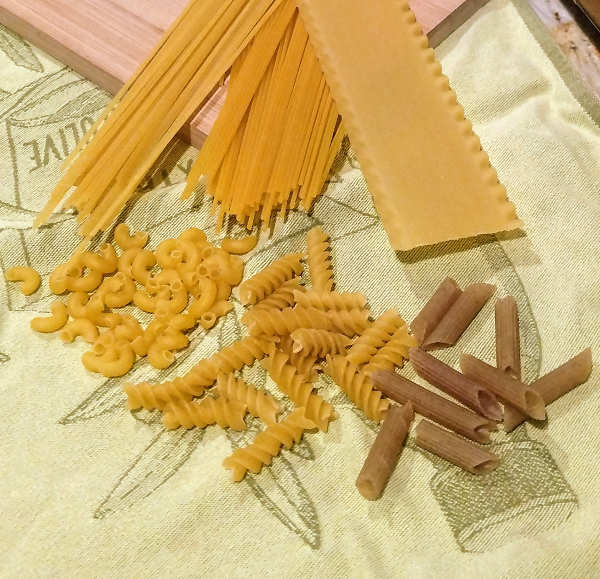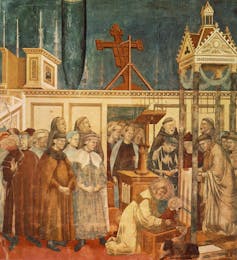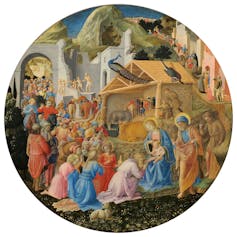- Esther Oertel
- Posted On
Mensam Mundum – World Table: Noodles around the world

It was a splendid moment when I was first introduced to pasta made fresh at home. Though it was more than 30 years ago, I still remember the wonder of its taste and texture.
It happened on a random weeknight when a friend invited me to her apartment for dinner. I was looking forward to spending time with her, but had no idea that the delicate, hand-cut noodles she had made that afternoon would bring me such joy.
She and I haven’t been in touch for many years, but the memory of that meticulously and lovingly made meal still lingers.
My friend incorporated her amazing noodles into an Eastern European dish, beef stroganoff. Despite that wonderful memory, Asian or Italian dishes most often come to my mind when thinking of noodles.
That’s not surprising. Those two regions have made the most of the art of noodle-making, though nearly every country in the world has its own form of noodle.
There’s spaetzle in Germany, orzo in Greece, pierogi in Poland and couscous in the Middle East, to name just a few.
In Asia, noodles are broadly divided into three types: wheat noodles, rice noodles, and glass or cellophane noodles, and within these categories there are countless varieties.
Not surprisingly, China, where there are thousands of types of noodles, is the world’s largest consumer of them.
In Italy, noodles are referred to as pasta, which translates to “paste,” a reference to the dough used in making them.
There are an estimated 350 different pasta shapes in Italy and about four times as many names for them. Names can vary from place to place, and many regions have pasta shapes and names unique to them.
Endings such as -ini, -elli, -illi, -etti, -ine or -elle on Italian pasta names denote “little,” and if -oni or -one ends the name, it means “large.”
Sometimes these suffixes can be applied to the same form of pasta to delineate a size range, such as spaghettini (smallest), spaghetti (regular), or spaghettoni (largest).
Some pasta shapes are designed to hold the sauce in the best way possible, such as with ridges, as in rigatoni or penne.
Noodles have an ancient history and it’s difficult to know in exactly part of the world they originated. More specifically, was it in China or Italy?
There is evidence of early consumption of noodles in both regions, as well as in the Middle East, but not enough information exists to make a definitive declaration as to whether one region influenced another.
There have been some inaccurate stories about the introduction of pasta to Italy, perhaps the most common being that Venetian merchant, writer and explorer Marco Polo brought noodles to Italy from China via the Silk Road in the 13th century.
In actuality, the story is a 1929 marketing ploy by the National Macaroni Manufacturers Association.
The earliest written record of noodles is in a book that dates to the Han Dynasty in China in the third century B. C. It was about five centuries later that a written reference to them is found in the western part of the world.
In an exciting 2005 discovery, scientists unearthed 4000-year-old noodles at an archeological site in Lajia, China. The long yellow strands were preserved within a bowl that was encased under ten feet of mud.
This represents the earliest example of the noodle in history. Even so, it’s possible that noodles originated in two or more places unrelated to each other.
American food writer Jen Lin-Liu, who went on a six-month noodle fact-finding trip along the ancient Silk Road from China to Italy, said, “We aren’t sure if the noodle developed in the west separately, after it appeared in the east or if pasta, as we know it, even relates to the noodles that were first eaten in China. There could have been two different food traditions that developed side-by-side in opposite parts of the world.”
For now, it’s an unsolved mystery.
In Japan, noodles are incorporated into tea ceremonies, and noodle making there is considered a form of art.
Noodles became more important in Japan after World War II when food shortages were rampant. Dried foods such as noodles were sometimes the only available nourishment.
In China, noodles are a symbol of longevity and special ones are served to celebrate birthdays. The name for these “birthday noodles” is shoumain, which literally translates to “long-life noodles.” The longer the noodles, the bigger the wish for long life.
Such noodles are considered lucky when eaten during the Chinese New Year. They represent longevity and happiness.
In almost every Asian culture, noodles are associated with long-term well-being.
According to Peter Song, who excels at making hand-pulled noodles in Japan (he can make up to 500 bowls of noodles a day, far more than the 100 per day to be considered a master), the first step is to ensure that the flour and water are perfectly balanced. There are no exact measurements; it’s based on experience through touch. For example, the temperature of the room makes a difference. If cold, more water is needed; if warm, less.
Similarly, in Italy, experienced pasta makers, whether grandmas or chefs, use their sense of touch to discern when pasta dough is ready.
While the ingredients that go into noodle or pasta making are simple – just flour and liquid (water or egg) – the process is something that can take years to master.
I ran across a YouTube chef named Helen Rennie who rightly says that unless a beginning pasta maker has someone in the same room to teach them, trying to gauge the readiness of the dough by feel is difficult. If a culinary class isn’t in your future, I’d recommend her tutorials if you’d like to try your hand at making pasta at home.
Today’s recipe is for one of my favorite pasta dishes, pasta pomodoro. Pomodoro means tomato in Italian, and this dish is full of them, along with one of their favorite companions, basil.
The red and green of the dish compliment the season, and it could make a tasty, if unusual, addition to your Christmas table. I also love the way the colors in the dish mimic the Italian flag.
Though basil is a summer herb, it can be found year-round in stores, thanks to producers who utilize green houses.
Canned whole plum tomatoes may be substituted for fresh, if desired.
Enjoy!
From Italy: Pasta Pomodoro
This recipe serves two to four, depending on serving size.
Esther’s Tip: The basil leaves and garlic left after the oil is strained may be blended into a paste and used to flavor sauces and soups. If stored in a tightly covered container, it should last in the fridge about a week.
Ingredients:
8 fresh Italian plum (Roma) tomatoes
1 cup extra virgin olive oil
1 generous bunch fresh basil, leaves removed and slightly crushed (first reserve several leaves for later)
10 garlic cloves, peeled and slightly crushed
¼ teaspoon dried chili flakes
1 – 9-ounce package fresh fettuccini, linguine or angel hair pasta
Salt and pepper to taste
Fresh parmesan to taste
Instructions:
Combine olive oil, garlic cloves, basil leaves (other than those reserved), and red pepper flakes in small saucepan. Simmer over low heat until flavors are infused into oil.
Prepare tomatoes by dipping in boiling water to loosen skins. Allow to cool, and then peel and seed them. Dice them and cook slowly in saucepan, mashing as they soften.
Strain infused oil into tomato sauce. Season as desired with salt and pepper.
Cook pasta in boiling salted water until al dente. (Be careful not to overcook.)
Drain (but don’t rinse) pasta and add to sauce. Toss pan or stir to combine.
Finely slice reserved basil leaves and add to pasta.
Grate parmesan into pasta and mix well.
Adjust seasonings as needed and enjoy!
Recipe by Esther Oertel.
Esther Oertel is a writer and passionate home cook from a family of chefs. She grew up in a restaurant, where she began creating recipes from a young age. She’s taught culinary classes in a variety of venues in Lake County and previously wrote “The Veggie Girl” column for Lake County News. Most recently she’s taught culinary classes at Sur La Table in Santa Rosa, Calif. She lives in Middletown, Calif.



























